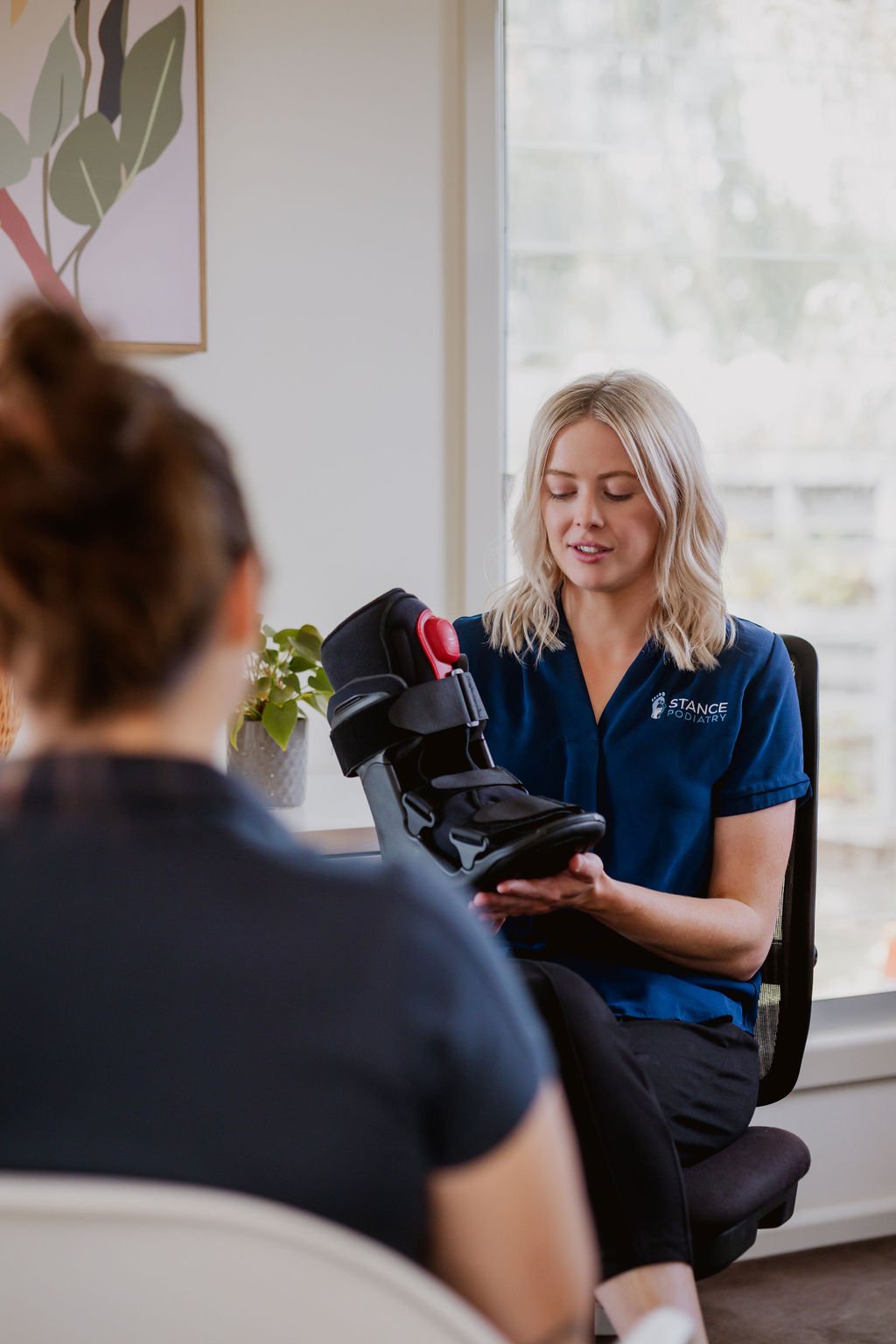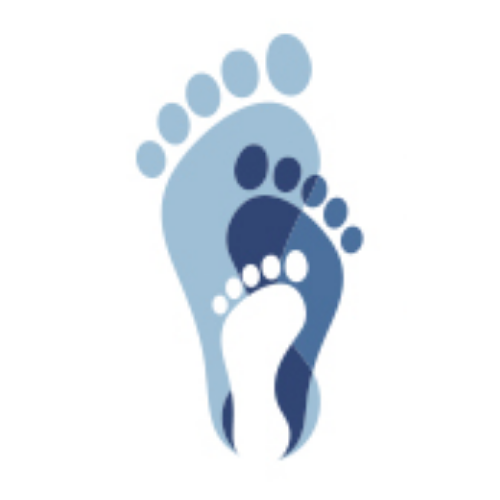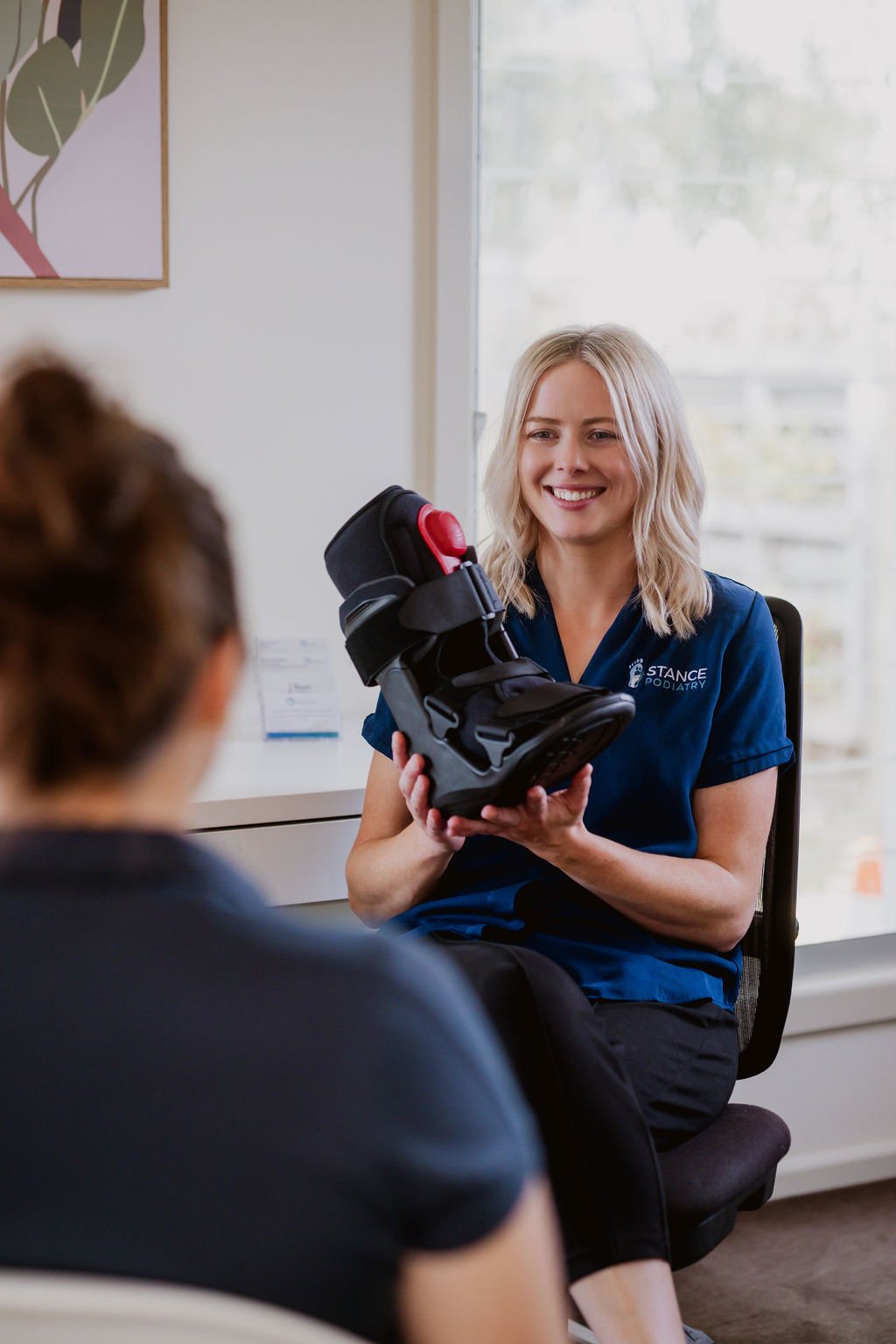
CAM Walkers/Moon Boots, Braces & Taping
Do you need a CAM Walker or Brace to manage your injury & live in the Geelong area?
A CAM Walker will be specifically fitted to offload or remove the pressure of an acute or chronic injury when pain is too great for walking.
A CAM Walker is necessary to allow healing to occur for a variety of foot and lower limb conditions such as plantar fascia tear, stress fractures, ankles sprains, broken bones, non- resolved chronic pain or other conditions that make walking difficult.
Why do I need to be fitted?
If you have been advised to wear a Moon Boot or CAM Walker it is because of a serious injury. For such injuries, it is important you are fitting correctly by a qualified podiatrist.
At Stance Podiatry we provide a same day fitting appointment where we will check the correct boot fit and guide you through the rehabilitation process while in the boot then when the boot comes off.
How long do I need to wear a boot for?
Time spent in a boot depends on your injury. For example, a broken bone could take up to nine weeks whereas a bony bruise might take for example two weeks. Some injuries require time in and out of the boot over a prolonged period of time. We will always re-assess the risk of further injury vs benefit of loading prior to getting out of a boot.
What does it feel like to wear a boot?
A CAM Walker will feel different as it is designed to take the pressure of a serious injury. You’re style of walking is a little different with the boot on but it is necessary to wear for proper healing. A CAM Walker will take a while to get used to and we encourage wearing an elevated heel to help keep you balanced. We generally recommend seeing other health professionals such as a physiotherapist, myotherapist, chiropractor or osteopath to help to make sure you are not overly compensating further up the chain.
Private health insurers generally provide rebates on CAM Walkers and Moon Boots when fitted by a Podiatrist.
Conditions that may require a CAM Walkers/Moon Boot:
Broken Bones
Stress Fractures
Non-resolved Chronic Injuries
Plantar Fascia tears
Ankle Sprains
Severes
Sesamoiditis
Other conditions making it difficult to walk
We recommend professional guidance if you need to wear a boot as you will be loading differently for a number of weeks and it can lead to an increased risk of further injury. Our recommendation is if you’re going to do something- do it properly!
Braces
Ankle injuries are common. And they can happen fast and in many different ways. Luckily, an ankle brace helps support your ankle throughout your recovery. But what kind of brace do you need? There’s lace-up, sleeves, higher ankle braces, and lower ankle braces. Choosing a brace can be very confusing.
Our podiatry team measures and fit various braces designed to support the foot and ankle in sport, work ,and recreational activities.
Used for preventative management but also to manage a painful joint these braces are comfortable, breathe well and support the foot enough to still allow normal function of the joint.
Conditions that may need a brace include:
Ankle Sprains
Tibialis posterior tendinosis
Ankle impringement
Arthritis
Prevention of injuries during activity
Plus More
Kinesiology & Rigid Taping
Taping is generally used to load certain structures differently to allow healing to occur in a painful area. and can be helpful for many conditions for many different reasons.
Depending on what you are trying to achieve with taping will indicate which tape to use.
Rigid taping – used for maximum stability and control, improving proprioception.
Kinesiology taping – used for minimal stability, fascial de-loading, neurophysiological changes, improving proprioception.
Active taping – used for moderate stability, de-loading and reloading the musculoskeletal system through a full range of motion, improving proprioception.
Taping is commonly used at Stance Podiatry in combinations with other therapies such as dry needling, therapy and foot strengthening exercises etc.



